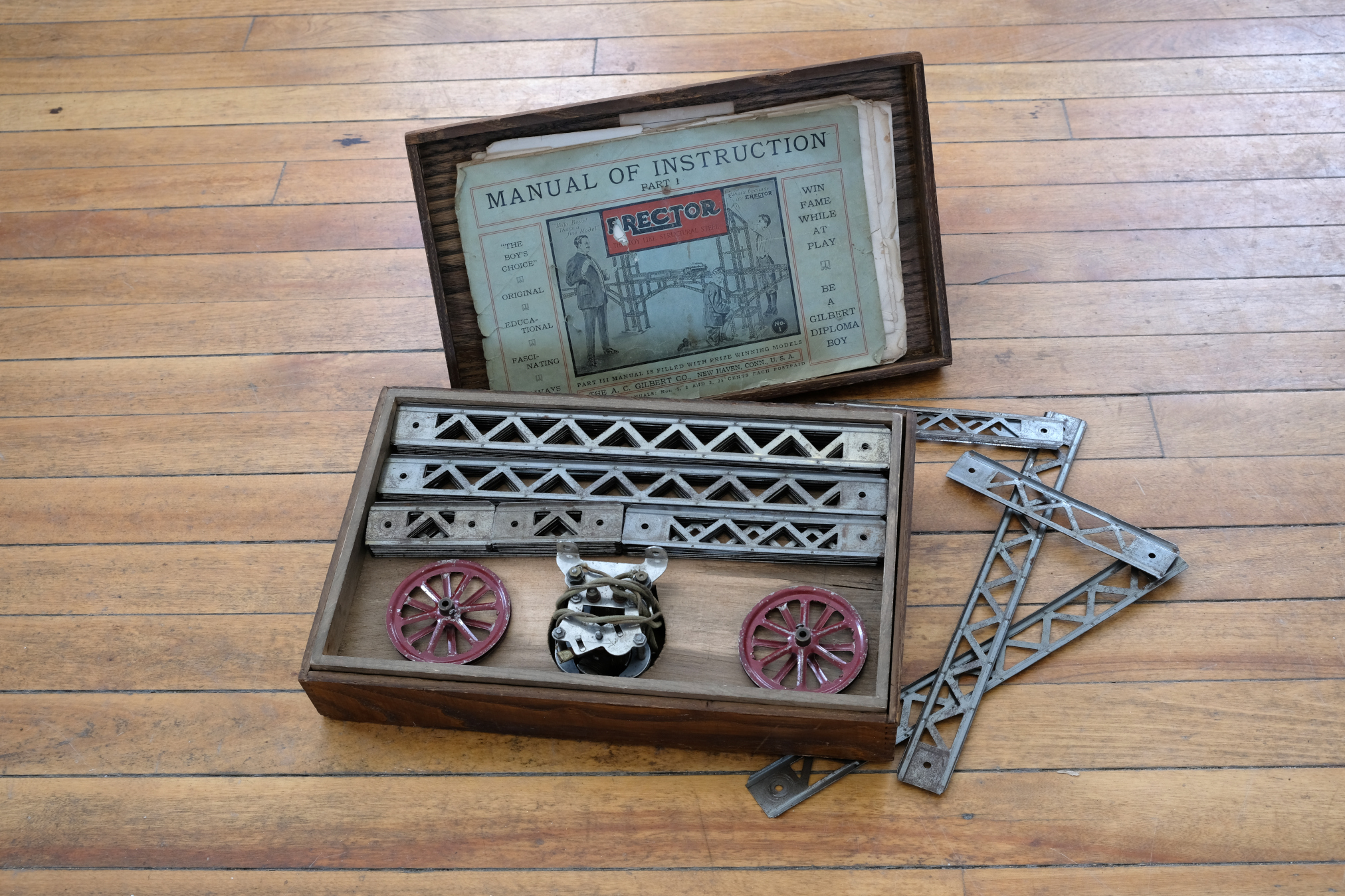Written by: Sam Nicholls - Connect with Sam at sam13nicholls@gmail.com

In the early days of settlement, it was not uncommon for men of the household - husbands, brothers, fathers and uncles – to build houses for their families. In fact, many rural and urban towns started off this way, with the men of the family building the community from the ground up.
Just as young girls would learn domestic chores and other traits of traditional womanhood, boys too would learn the skills necessary to provide for their families. One of the ways that they would develop such skills was through the use of toys, such as construction sets. The South Frontenac Museum has on display an Erector Set, manufactured by the A.C. Gilbert Company (formerly the Mysto Company). Toys such as these provided boys with an imaginative and creative outlet that would simultaneously teach them skills in building, construction and other labour-focused work.
Albert Carlton Gilbert, the founder of the A.C. Gilbert Company, was inspired by watching the construction of steel girders and sought out to create an original toy. Competing against the pre-established Meccano set from England, Gilbert needed something that stood out against other construction toys. In 1913 Gilbert produced his own Erector set, unique because of the square girder the set contained.
The erector set in the care of the South Frontenac Museum is one of the earlier models from 1913-1923, evident because of the natural wooden box that contains the set. Following models were painted, and beginning in 1932-1933, A.C. Gilbert Erector sets were sold in steel cases of blue, green or red. The period after 1923, before the institution of metal cases, has become recognized as the “classical” period of the Erector set. It was in this period that specific sets were made to build particular models, such as the Steam Shovel, White Truck, Zeppelin, Ferris Wheel and Hudson Locomotive.
The A.C. Gilbert Erector set toy encouraged young boys to explore and expand their understanding of engineering, construction, and tools. During The Great War, A.C. Gilbert was encouraged to cease the development of his Erector set toys and invest his time manufacturing tools and equipment for the war. Gilbert did not agree, believing that a creative and useful toy such as the erector set could simultaneously teach boys useful skills while their fathers were away, as well as take their mind off of wartime anxieties.
Indeed, the new technology used during World War I, coupled with more traditional warfare methods encouraged participating countries to invent and industrialize. In North America, this meant encouraging young boys to build beyond homes and farms and invest their time in new and exciting projects to benefit the United States and Canada. A.C. Gilbert’s Erector set thus became a near essential toy for every young boy to own.
In rural communities such as South Frontenac, where farming was often an inter-generational practice, it could be hard for young boys to envision themselves working in urbanized spaces. Gilbert’s Erector set also allowed these communities to innovate and play with toys that would benefit farming towns – imagine, a young boy creating a miniature farming tool only to grow up and build a real one based on his childhood model!
For more information:
https://en.wikipedia.org/wiki/Erector_Set